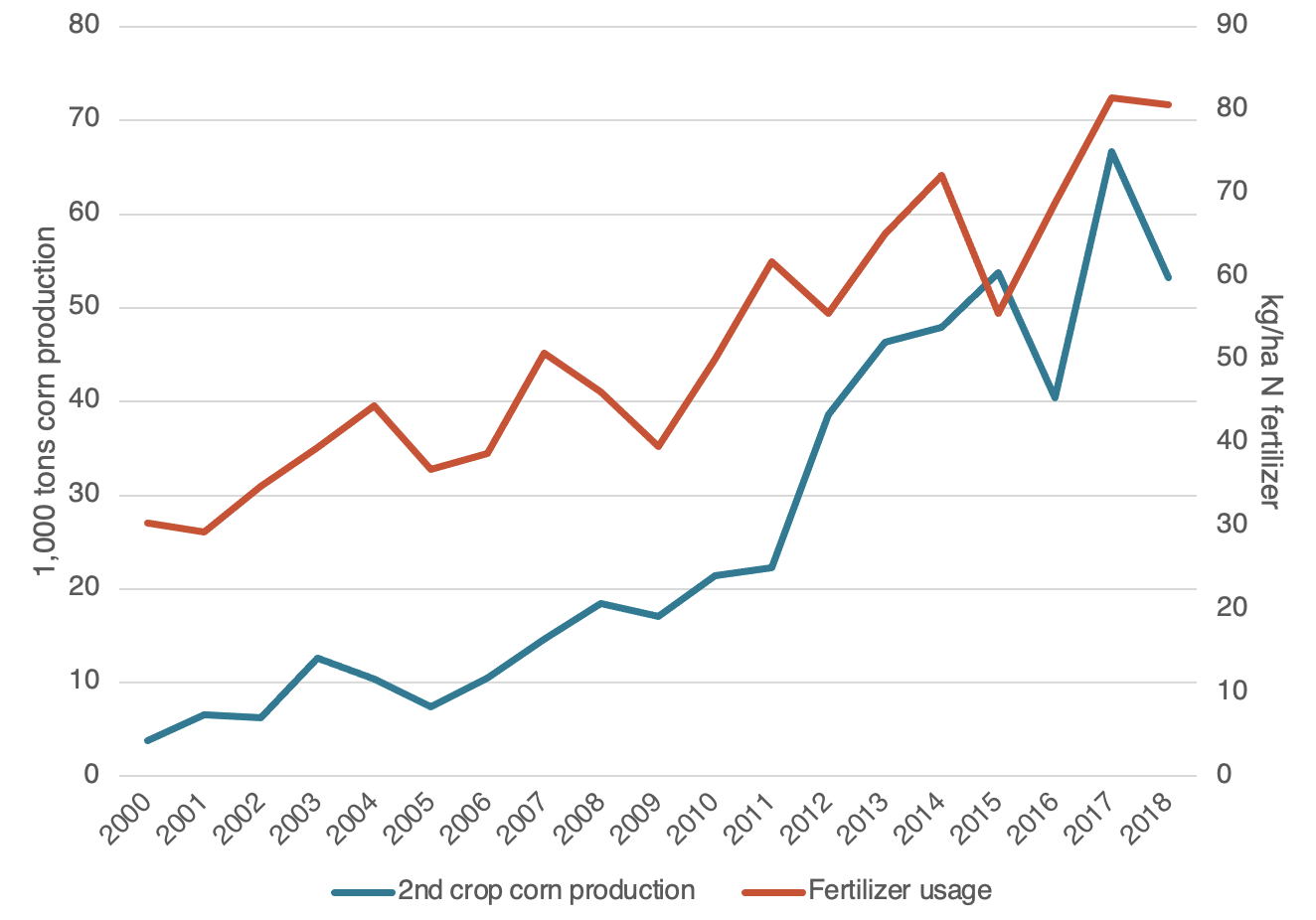Will someone please tell me if biofuels are good or bad for the environment?
Blog
Cover crops: A cover story for business-as-usual biofuels
Cover crops, which are grown after a main crop has been harvested and before the next season’s crop is sown, have been offered by some as a low-carbon solution for meeting the growing demand for alternative fuels. Within the biofuels sector, several major companies have proposed cover crops as a more sustainable biofuel feedstock than business-as-usual food-based biofuels. Nuseed, a North American company specializing in canola, carinata, sorghum, and sunflower crops, has suggested that cover cropping is a negative emissions technology that sequesters carbon while contributing no carbon emissions of its own. Neste, one of the world’s largest renewable diesel producers, has also presented cover crops as a zero indirect land-use change (ILUC) pathway in jet fuel applications.
Cover crops can provide environmental benefits under certain circumstances. Planting cover crops during the winter season can benefit soil health by reducing erosion and nutrient leaching, improving soil fertility, and increasing biodiversity. In Europe, the Common Agricultural Policy has promoted the use of cover cropping as a form of sustainable land management. However, cover cropping is not limited to growing crops strictly for soil cover or other environmental purposes. This practice can also include growing cash crops during the winter months for food, feed, or biofuel production.
Increased demand for cover crops globally will lead to land-use change and the associated greenhouse gas impacts in the same way that business-as-usual food-based biofuels do. These impacts apply to growing both traditional cash crops such as corn and soybean and inedible soil cover crops like carinata and camelina. To illustrate, imagine a field where a farmer has been planting soybeans in the summer and corn in the winter for years and selling both for livestock feed. Suddenly, a strong policy incentive emerges for biofuels produced from cover crops, and the farmer starts selling the corn to an ethanol producer. The livestock farm still needs corn and purchases it elsewhere, increasing global demand—and thus prices of corn—eventually leading another farmer to expand her cornfields somewhere else to fill in the gap in supply. If this sounds exactly like ILUC, that’s because it is.
Even if the first farmer stops planting corn and instead plants camelina in the winter, he still displaces corn from livestock feed, causing ILUC. And even if the farmer was not planting any crops in the winter before the cover cropping incentive? Using that land for biofuels can still cause ILUC if the farm is in a region where cover cropping is expanding. For example, in Brazil, cover cropping has risen rapidly over the last twenty years. Supply of the secondary corn safrinha crop has outpaced the supply of primary maize since 2012, now accounting for two-thirds of national corn production (Figure 1)—and this is probably mostly destined for animal feed. So if we start growing biofuel feedstock during the winter on a farm surrounded by farms already growing safrinha, absent biofuel incentives, our farm probably would have started growing safrinha in the near future anyway. Now the corn the farmer isn’t producing for livestock will have to be produced by someone else on newly converted land.

Demand for cover crops in biofuel can also lead to direct land-use change. When farmers make the decision to expand their cropland, they focus on their overall financial picture: all expenses (e.g. cutting down a forest) compared to all revenue (including cash from the winter crop). Greater incentives for cover crops will likely lead to more expansion of double-crop systems onto natural land than with just the food and feed market alone. And one last way cover crops can contribute to land-use change? They can reduce yields of the primary crop (soybeans in the example above), leading to a shortfall in the supply of that crop and resulting cropland expansion to meet the increased demand.
In addition to land-use change, cover crops may contribute to other adverse environmental impacts. This includes increased demand for irrigation and synthetic fertilizer to sustain year-round crop growth. Along with growth in safrinha, Figure 1 also shows that nitrogen fertilizer consumption per hectare increased 165% between 2000 and 2018. Fertilizer production is energy intensive and fertilizer application releases a lot of greenhouse gas emissions when microbes in the soil convert nitrogen to nitrous oxide.
Other environmental issues associated with cover cropping can occur in arid regions. Researchers in Serbia have found that cover cropping may contribute to soil water depletion and reduced primary crop yields, which makes sense because all crops soak up water. However, cover cropping may provide yield benefits in non-arid regions due to increased nutrient retention.
Despite what the industry has presented, there is no escaping ILUC from cover crop biofuel, as well as the traditional negative environmental impacts such as those caused by fertilizer that accompany all cash crop production. Cover cropping by itself is not a bad thing, and in fact, increasing the practice in places where it is not already done can provide valuable soil benefits. However, cover cropping for environmental reasons is better incentivized under agricultural policies such as the European Common Agricultural Policy, which is unlikely to lead to perverse environmental outcomes. Cover crops for biofuels sounds like a good solution, but as with most things that involve land-use change, the story is not so simple.
